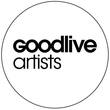
GLASS ANIMALS
Das am 26.08 erschienene zweite Album der Glass Animals “How To Be A Human Being” ist wie ein Notizbuch, ein Tagebuch und Stickeralbum, das all die Erfahrungen sammelt, welche die Band in den letzten Jahren unterwegs auf Tour gesammelt hat, die Eindrücke von und Erinnerungen an Menschen und Orte auf der ganzen Welt. Viele Ideen zu Texten hat Sänger Dave aus Audioschnipseln, die auf seinem Handy gespeichert sind. Wie ein umherreisender Reporter dokumentiert er Gesprächsfetzen in den unterschiedlichsten Situationen. “I try to sneakily record people, and I have hours and hours of these amazing rants from taxi drivers, strange people we met outside of shows, people at parties. People say the strangest shit when they don’t think they’re ever gonna see you again.” Aus den Voice Notes entsprangen Ideen für Charaktere, die Dave ähnlich weiterentwickelte, wie es wohl ein Drehbuchautor tun würde: “I’d obsess over what they ate, where they lived, what their furniture looked like, what they wore,” lacht er.
Mitte Mai stellten die Glass Animals ihre Single “Life Itself” vor, die den Buzz um die Band erneut entfachte. Der Track ist immersiv, exotisch und schlägt den band-typischen Weg tief ins Dickicht abseits der bekannten Wege ein. Ein Song der die Glass Animals nach ihrem sensationellen Aufstieg direkt zurück in den Fokus der Aufmerksamkeit rückte.
Ihr erstes Album “Zaba” (2014), das Caroline ebenso wie das neue Album zusammen mit Paul Epworths Label Wolf Tone veröffentlicht, hat sich weltweit mittlerweile über eine halbe Million mal verkauft und verzeichnet mit seinen Songs unglaubliche 200 Millionen Plays allein bei Spotify. Die Shows des Quartetts aus Oxford mussten auch in Deutschland regelmäßig in größere Clubs verlegt werden. Die Glass Animals begeisterten beim Coachella, Lollapalooza oder beim Glastonbury nicht weniger als vor ausverkauften Häusern in Los Angeles mit 2000 Leuten im Wiltern oder dem New Yorker Terminal 5 vor 3000 Fans.
Elder Island
Elder Island are prepped to step back into the light with a new
release. A progression in sound leads us from 2014’s self-titled EP down a path
that is somewhat darker, but also richer and more
well established.
Seeds in Sand is a full bodied collection of five tracks: an incitement to dance but
also to wallow in its multilayered synths, beats and melodic broodings.
The voice that accompanies us throughout the record has evolved its
own soulful style. It is capricious, flitting from rhythmic intonations to
meandering melodies. This is underwritten by dynamic synth layers, catchy bass phrases
and a rich patina of drum, guitar, cello and other eclectic recordings.
Self-recorded and produced, some Lo Fi aspects of the last EP have
been dropped and replaced by a higher quality in production. This rings true
sonically with the bands overall tone, bringing with it a new space and
definition.
Elder Island are not a genre specific band. The trio formed as art graduates in Bristol
and the music they write reflects this varied creative background. The band’s
debut EP was released in 2014 on Four Thieves Records and grew steadily in
popularity, spurred forward with radio plays from the likes of Giles Peterson
and BBC Introducing West. It was through BBC
Introducing that the band were invited to Maida Vale studios to record three tracks and a
video performance for the station’s 2015 Maida Vale Sessions.
‘The Big Unknown’, the standout track from the last EP,
reached one million plays in April of this year. In sound and scope the track
is a cue to those featuring on the upcoming release.
By adopting an individual approach to the styling of gigs, the mood and
pace of Elder Island’s performances are often tailored to venues and their respective crowds.
Festivals such as Simple Things, Secret Garden
party and this year’s Lost Village festival necessitate a high octane, dance
orientated performance. Alternatively, the band are also at home creating
soundscapes for more intimate experimental gigs.



